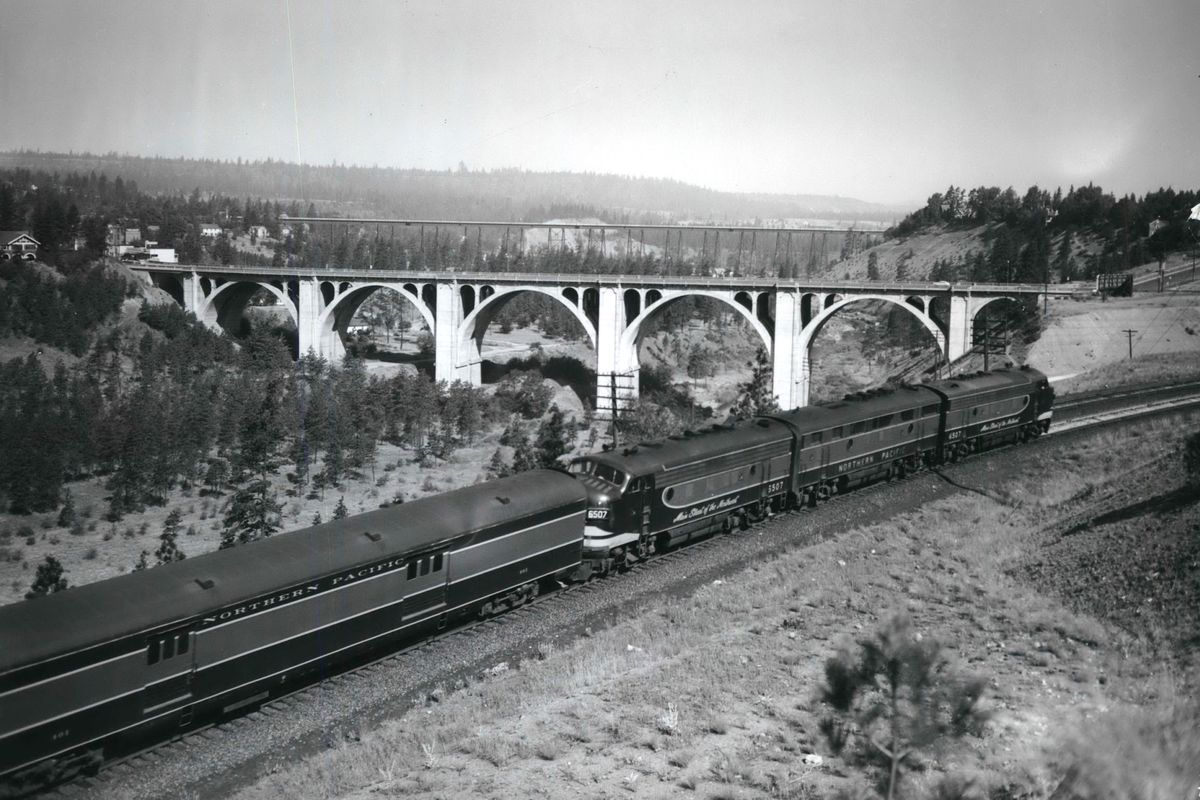Then and Now: North Coast Limited

In the late 1800s and the early 20th century, railroad entrepreneurs competed to create a seamless system, connecting every region by rail. The biggest challenge was connecting the Northwest to large Midwest cities.
In 1900, the Northern Pacific Railway announced a new regular service, called the North Coast Limited, a twice-daily train from Minneapolis to Portland and Seattle. The trains left St. Paul, Minnesota, morning and night and took approximately three days to arrive in Portland.
The first advertisements called the North Coast Limited “one of the handsomest and most complete passenger trains in the country” with baggage, passenger, sleeper and dining cars all lit with electric lights at each seat.
The railroad promoted comfortable observation cars to view the western scenery, ventilated cars where smokers could play cards and a library car with books for the bored traveler.
Other named trains competed to bring people west. The Great Northern Empire Builder, carrying the nickname of railroad founder James J. Hill, started service from Chicago to Seattle in 1929, a trip that took between 61 and 63 hours that year.
Creating a named daily service required complex alliances among rail companies along the route.
The Spokane, Portland and Seattle Railway, which built multiple bridges over the Columbia River, carried the North Coast Limited and the Empire Builder and took passengers to the coast via the Tri-Cities.
Other named trains connecting the Midwest and Northwest included the Alaskan, the Olympian Hiawatha, the General Custer, the Oregonian, the Oriental Limited and the Western Star.
Modern diesel-electric locomotives, like the sleek EMD F-units introduced in 1939, combined with new streamlined cars, cut travel times further.
From 1952 to 1971, the Northern Pacific also ran the Mainstreeter, a service between Chicago and Seattle. The name came from the railroad’s advertising slogan: “Main Street of the Northwest.”
In 1970, the Great Northern, the Northern Pacific, the Spokane, Portland and Seattle, and the Chicago, Burlington and Quincy railroads merged to become Burlington Northern, which consolidated many former competitors.
Consolidation and falling ridership spelled the end for the named trains, though Amtrak, a quasi-public corporation formed in 1971 to preserve passenger service, ran a three-days-a-week successor called the North Coast Hiawatha through the 1970s and still operates the Empire Builder.